#Berberis vulgaris
Explore tagged Tumblr posts
Text
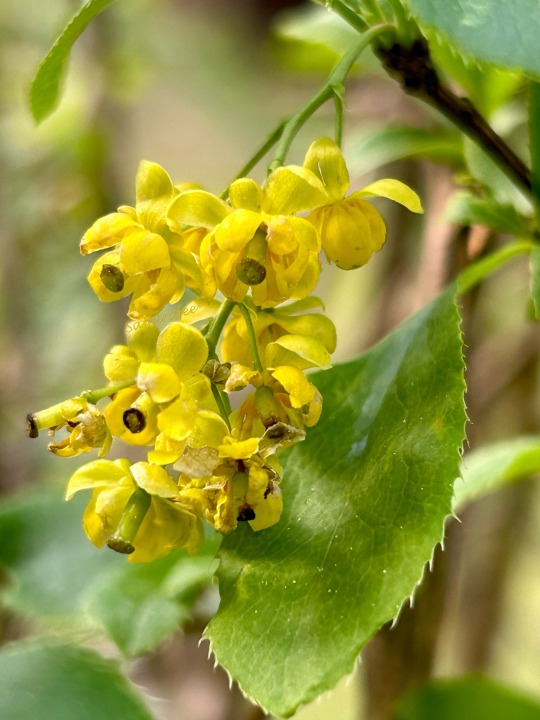
#BERBERIS VULGARIS - COMMON BARBERRY🔅🍃🌼🍃🔅
@samirafee
#source: samirafee#own picture#photographers on tumblr#nature#plants#my garden#berberis vulgaris#common barberry#spring#april 2024
55 notes
·
View notes
Video
n385_w1150 by Biodiversity Heritage Library Via Flickr: J. Sturms Flora von Deutschland : Stuttgart :K. G. Lutz,1900-1907. biodiversitylibrary.org/page/55366535
#Germany#Royal Botanic Gardens Kew#Library#Art & Archives#bhl:page=55366535#dc:identifier=https://biodiversitylibrary.org/page/55366535#Flowers#flickr#berberis vulgaris#Barberry#common barberry#European barberry#botanical illustration#scientific illustration
2 notes
·
View notes
Text
Here is a hashtag list of supplements, arranged in alphabetical order.
Select the desired one.
#supplements#Allium sativum#Angelica sinensis#Apium graveolens#Arctium lappa#Asparagus racemosus#Astragalus membranaceus#Bacopa monnieri#Berberine#Berberis vulgaris#Cinnamomum verum#Cordyceps sinensis#Crataegus sp.#Crocus sativus#Eleutherococcus senticosus#Leonurus cardiaca#Magnesium#Melissa officinalis#Panax ginseng#Rhodiola rosea#Salvia miltiorrhiza#Schisandra chinensis#Scutellaria baicalensis#Vitis vinifera#Withania somnifera#Zingiber officinale
1 note
·
View note
Text
Berberis Vulgaris Uses in Hindi: बर्बेरिस वल्गैरिस एक प्रकार की जड़ी बूटी होती है और यह दवाई berberine, berbamine और Palmatine को मिलाकर बनाई जाती है। जिसका उपयोग सदियों से चीनी, जापानी और मूल अमेरिकियों के द्वारा किया ���ाता रहा है। इस दवाई का अपना एक लंबा इतिहास रहा है और बर्बेरिस वल्गैरिस को लेकर कहा जाता है कि इस दवाई से कई फायदें होते है।
#berberis vulgaris uses in hindi#berberis vulgaris hindi uses#berberis vulgaris uses#berberis vulgaris in hindi
0 notes
Text
Harilik kukerpuu
Berberis vulgaris L., Berberidaceae Barberry
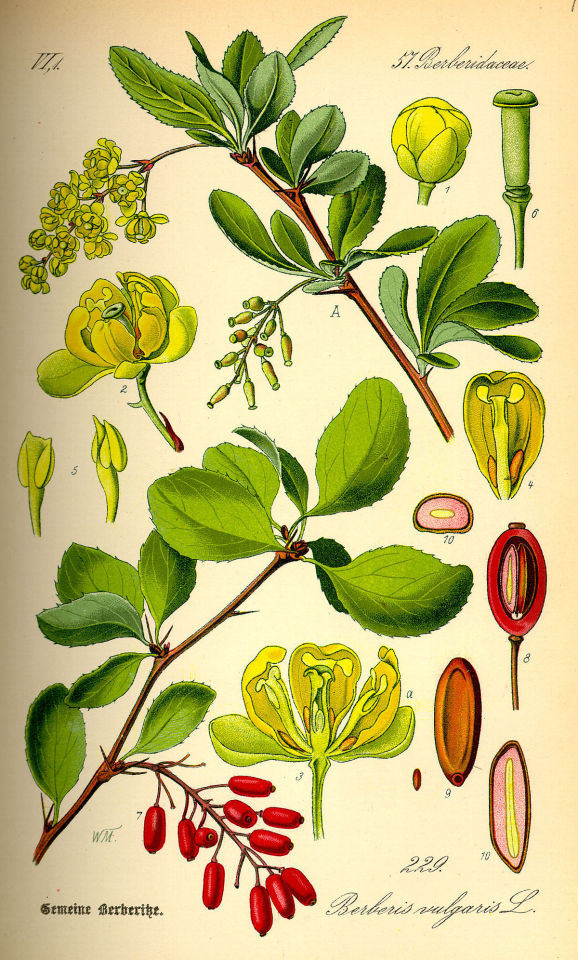
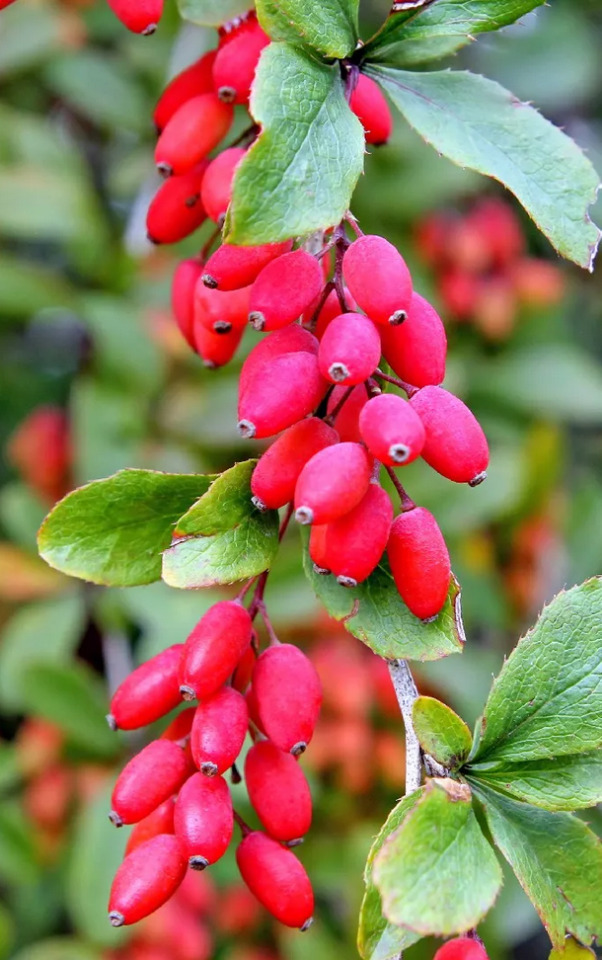
Harilik kukerpuu on 2-3m (5m) kõrgune rohkesti harunev põõsas.
Ravimina kasutatakse juuri ja lehti, mida korjatakse peale õitsemist, suve lõpus.
Droog vähendab valusündroomi, soodustab sapi eritumist. Kasutatakse hepatiitide, hepatokoletsüstiidide ja sapikivide puhul.
Lehtedest valmistatud alkoholväljatõmmatist kasutatakse emakaverejooksu sulgeva vahendina, ka maksa ja sapiteede haiguste korral.
Kirjeldus
Harilik kukerpuu on 2-3m (5m) kõrgune rohkesti harunev põõsas.
Noored võrsed kollakad või kollakadpunased, vanemad hallikad. Lühivõrseid palju, lehed kinnituvad neile kimpudena. Astlad, mis on muunudunud lehed. asuvad lühivõrsete alusel ja on vanematel võrsetel kolmeharulised, noortel aga harunemata, 1-2cm pikad.
Lehed elliptilised kuni ��raspidimunajad, peen-ogajalt saagja servaga, 3-6cm pikad, 1,5-3cm laiad. Lehelaba aheneb kiiljalt 1,5-2cm pikkuseks leherootsuks.
Õitseb mais, juunis, õied kollased, 15-20-kaupa 4-6cm pikkustes kobarataolistes rippuvates õisikutes, sisaldavad mesinestet.
Vili on 0,8-1,2cm pikkune punane mari kahe, harvemini kolme seemnega. Viljad on hapuka maitsega, söödavad, kasutatakse keediste valmistamiseks.
Ilupõõsana ei soovitata harilikku kukerpuud väga laialdaselt kasvatada, sest ta on kõrrerooste vaheperemees.
Kasvab loodudel, võsastikes, teeservadel, metsades, parkides, aedades, eriti rohkesti Lääne-Eestis. Dekoratiivpõõsana talub hästi kärpimist.
Puit on helekollane, hästi poleeritav.
Ravim
Hariliku kukerpuu kõik organid sisaldavad alkaloide. Nende saamiseks kasutatakse peamiselt juuri ja lehti - folium et radix Berberidis. Kõige rikkam alkaloididest on juurte koor.
Lehti kogutakse peale õitsemist. Et vältida torkimist, lõigatakse kääridega lühivõrsed koos lehtedega.
Juuri kogutakse sügisel septembris-oktoobris. Põõsas raiutakse maha, juured kaevatakse labidaga maa seest välja, pestakse, kuivatatakse vilus. Juured on pinnalt pruunid, seest sidrunkollased.
Viljad sisaldavad 6,6% õunhapet, sidrunhapet, viinhapet, glükoosi ja fruktoosi.
Droog sisaldab kuni 0,1% alkaloide berberiini, oksüakantiini, palmatiini, kolumbamiini, peale selle parkaineid, jälgedena eeterlikku õli. Alkaloididest kasutatakse ainult berberiini.
Toimed
Berberiin on spasmolüütilise toimega, vähendab valusündroomi, soodustab sapi eritumist. Kasutatakse hepatiitide, hepatokoletsüstiidide ja sapikivide puhul.
Lehtedest valmistatud alkoholväljatõmmatist kasutatakse emakaverejooksu sulgeva vahendina, ka maksa ja sapiteede haiguste korral.
Taime levi
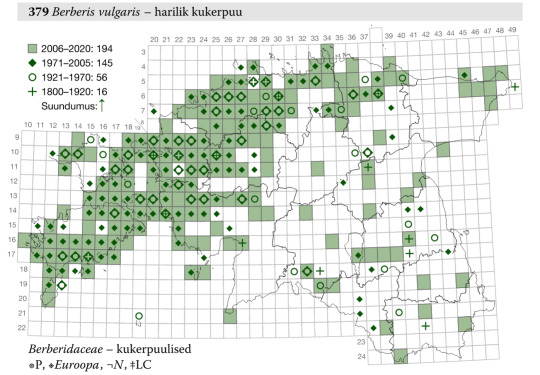
Allikad
Tammeorg, J., Kook, O. & Vilbaste, G. (1973). Eesti NSV Ravimtaimed. Tallinn: Valgus.
Eesti taimede levikuatlas 2020
2 notes
·
View notes
Text


B - Berberis vulgaris L. - Crespino comune (Berberidaceae)
19 notes
·
View notes
Text
Holistic Approach to Gall Bladder Stone Treatment: Homoeopathy Explained
Discover the efficacy of homoeopathy in treating gall bladder stones naturally. Learn about gentle remedies and holistic care for lasting relief.
Gall bladder stones, also known as gallstones, can cause significant discomfort and disrupt daily life. While conventional treatments like surgery may seem like the only solution, homoeopathy offers a holistic approach that addresses the root cause of the problem. Let's explore how homoeopathy can provide effective treatment for gall bladder stones.

Understanding Gall Bladder Stones:
Gallstones are hardened deposits that form in the gall bladder, a small organ responsible for storing bile produced by the liver. These stones can vary in size and composition, ranging from tiny particles to large masses. Gallstones often develop due to imbalances in bile composition, leading to the crystallization of cholesterol or bilirubin.
Homoeopathic Perspective:
Homoeopathy views diseases as an imbalance in the body's vital force and aims to restore harmony through natural remedies. In the case of gall bladder stones, homoeopathic remedies work by stimulating the body's innate healing mechanisms, thereby helping to dissolve the stones and prevent their recurrence.
Gentle Remedies for Gall Bladder Stones:
Homoeopathic medicines for gall bladder stones are selected based on individual symptoms and constitution. Common remedies like Lycopodium, Chelidonium, and Berberis Vulgaris are often prescribed to alleviate pain, reduce inflammation, and facilitate the expulsion of stones. These remedies are gentle yet potent, offering relief without the side effects associated with conventional medications.
Addressing Underlying Factors:
Homoeopathy doesn't just treat the symptoms; it addresses the underlying factors contributing to gall bladder stone formation. This may include dietary modifications, lifestyle changes, and stress management techniques. By addressing the root cause of the problem, homoeopathy helps prevent recurrence and promotes overall well-being.

Holistic Care for Lasting Relief:
In addition to homoeopathic remedies, holistic care plays a crucial role in managing gall bladder stones. This includes adopting a healthy diet rich in fruits, vegetables, and whole grains while limiting processed foods and saturated fats. Regular exercise, adequate hydration, and stress reduction techniques such as yoga and meditation further support the body's natural healing process.
Conclusion:
Gall bladder stones can be a source of considerable discomfort, but homoeopathy offers a gentle and effective alternative to conventional treatments. By addressing the underlying imbalances in the body, homoeopathic remedies promote lasting relief and overall well-being. If you're seeking a natural approach to gall bladder stone treatment, consider consulting with a qualified homoeopathic practitioner to explore your options.
3 notes
·
View notes
Text

Karamuk Nedir?
Karamuk, enfeksiyonlarla mücadele eden ve bağışıklık sistemini güçlendiren bir bitkidir. Karamuk meyvesi ise, lezzet ve besin değeri bakımından zengin olup, çeşitli yemeklerde kullanılıyor. Bu özellikleriyle karamuk, sağlıklı bir diyetin önemli bir parçası olarak dikkat çekiyor.
Modern tıbbın hayati çözümler sunduğu bir dönemde, alternatif tıp da yüzyıllardır insanlığın şifa bulma çabasında yanında yer alıyor. Bu eski ve gizemli dünyada, doğal bitkilerin önemi tartışılmaz bir gerçek olarak karşımıza çıkıyor; onlar, çay olarak demlendiğinde ya da bazen çiğ, bazen pişmiş olarak tüketildiğinde, yaşamın özünden gelen bir iyileşme sözü veriyor.
Berberis Vulgaris, yani halk arasında kadın tuzluğu veya karamık olarak bilinen karamuk bitkisi, şifalı bitkiler dünyasında öne çıkıyor. Geniş bir yelpazede sağlık faydaları sunan bu bitki, alternatif tıp dünyasında değerli bir kaynak olarak kendini gösteriyor. Karamuk, doğanın sunduğu zenginlikler arasında, tıpkı bir hazine gibi parlayan bir mücevher niteliğinde.
Kaynak: (Vahdaniyet Haber Sitesi) https://www.vahdaniyet.com/karamuk/
2 notes
·
View notes
Text
Real & Edible
Allspice → Allspice
Pimenta dioica, aka allspice
In the game we use the root, IRL we use the dried fruit.
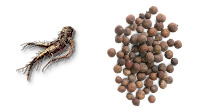
Arenaria → Sandwort
Literal translation (arenaria = sandwort)
There are tons of arenaria species with flowers that look exactly like the ones in the game (Arenaria montana pictured).
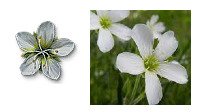
Berbercane fruit → Barberry
Berberis vulgaris, aka barberry

Beggartick → Bidens OR hibiscus
Literal translation (beggartick = Bidens)
In the game the flower doesn’t really look like beggartick, even red cultivated types, but I’m going to stick with the literal name on this one.
In Polish, it’s “Kwiat dwugrotu” which doesn’t seem to be a real thing, but translates to “two-headed flower.”
In the English translation of The Voice of Reason (pt 6) - “Glass reservoirs full of gnarled rhizomes of the hallucinogenic bitip.” Bitip also does not seem to be a real thing. Based on this it’s a swamp plant.
In the first Witcher game, the beggartick looks a lot like a hibiscus. Hibiscus tea has also been said to cause dizziness and hallucinations.
(Pictured clockwise: Witcher 3 beggartick, Bidens ferulifolia, hibiscus, Witcher 1 beggartick).
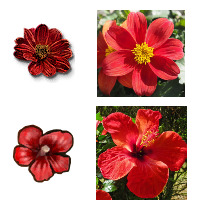
Bison grass → Bison grass
Hierochloe odorata/alpina, aka bison grass, aka sweet grass.
Debatably edible, contains coumarin which is supposedly a blood thinner and can cause liver damage in large quantities. It’s banned from foodstuffs in the USA.

Blowball → Dandelion*
“Dmuchawiec” in Polish, literally dandelion.

Buckthorn → Sea buckthorn
Grows in water in the game, so I assume it’s supposed to be sea buckthorn (which doesn’t actually grow in water, but.. close enough).
In Baptism of Fire, it’s referenced as being in the forest, so it’s probably the tree in the books (brilliant deduction skills). The tree berries, bark, and roots are toxic.

Cortinarius → Cortinarius caperatus
Cortinarius caperatus, aka gypsy mushroom
There are tons of species in the genus Cortinarius, but Cortinarius caperatus is edible and looks like the game version.

Honeysuckle → Honeysuckle*
Lonicera periclymenum and Lonicera japonica are two types of honeysuckle with edible flowers/nectar.
In the game, it looks more like Lonicera sempervirens (coral honeysuckle, pictured).
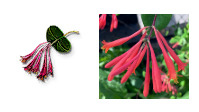
Hop umbels → Hops
Humulus lupulus, aka hop plant.

Moleyarrow → Yarrow*
Is it mole yarrow or moley arrow? The great debate. Yarrow is real and edible.
In Polish “mysichwost” or “storczyka mysichwosta.” English book translation is the "mouse-tail orchid.”
“[...] and the tiger-striped petals of the mouse-tail orchid.” (The Voice of Reason 6).
There IS a mousetail orchid, Oberonia myosurus, but it’s very tiny and doesn’t look like the game version, nor does it have striped petals.
Orchids are edible!
I’ll be using yarrow because it grows where I live and orchids are more difficult/more expensive to obtain.
(Pictured clockwise: in-game harvested moleyarrow, yarrow, yellow orchid, in-game moleyarrow).

Nostrix → Sweet clover
Nostrzyk in Polish = melilotus (sweet clover)
In the game, it looks like ivy. Most ivy are not edible. Ground ivy (creeping charlie) is edible, but I think that conclusion requires more steps (Nostrix looks like ivy → ivy isn’t edible → ground ivy is edible vs nostrzyk → melilotus).
English book translation, “He saw stretches of star-leafed melilote.” (The Voice of Reason 6). Melilote is still sweet clover (though it certainly doesn’t have star-shaped leaves).

Puffball → Puffball*
Puffball mushrooms encompass several genera, including Calvatia, Calbovista, and Lycoperdon. The majority of true puffball mushrooms are edible.
In the game, they don’t look like true puffballs. In polish they are “purchawka” which = puffball.
(Pictured: Lycoperdon perlatum, or common puffball).

Ribleaf → Ribwort*
Plantago lanceolata, aka ribwort.
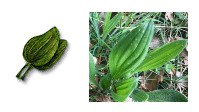
Verbena → Verbena*
All verbena is generally safe to eat (flowers/leaves)
I’ll be using a mix of Verbena hastata (blue vervain), Verbena bracteata (bigbract verbena), and Aloysia citrodora (lemon verbena).
Blue vervain and lemon verbena are common for use medicinally, and I found bigbract verbena in my yard.
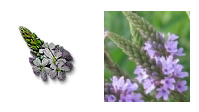
White Myrtle → Myrtle
Fruit, flowers, and leaves of most myrtles appear to be edible.
"White Myrtle” can refer to either Hypocalymma angustifolium (a shrub) or Auranticarpa rhombifolia (a tree).
I wasn’t able to find petals, so I’ll be using leaves from Myrtus communis, the common myrtle.

7 notes
·
View notes
Text
Crush Your Kidney Stone with Homeopathy Treatment
Kidney stones can be painful, but homeopathy offers a safe and effective solution. Remedies like Berberis Vulgaris, Lycopodium, and Cantharis work to dissolve kidney stones, reduce pain, and promote kidney health. Homeopathic treatments address the root causes of stone formation and help prevent future occurrences.
Visit Us:-
https://drdeepikashomeopathy.com/effective-kidney-stone-treatment-in-homeopathy-dr-deepikas-homeopathy/
0 notes
Video
n57_w1150 by Biodiversity Heritage Library Via Flickr: Flore forestière :. Paris :J. Rothschild,1872.. biodiversitylibrary.org/page/13414188
#Forest plants#Forests and forestry#Missouri Botanical Garden#Peter H. Raven Library#dc:identifier=http://biodiversitylibrary.org/page/13414188#berberis#Barberries#rhamnus cathartica#Buckthorn#rubus fruticosus#blackberry#rubus#brambles#calluna vulgaris#calluna#erica#heath#vaccinium myrtillus#European blueberry#heather#ling#barberry#bilberry#European buckthorn#wimberry#purging buckthorn#whortleberry#botanical illustration#scientific illustration
4 notes
·
View notes
Text
Homeopathy is increasingly considered a complementary approach for managing kidney and liver issues. This alternative medicine focuses on using natural remedies in small doses, personalized for each individual. Many homeopathic practitioners believe that these remedies can support kidney and liver health by stimulating the body's own healing processes and helping detoxify these essential organs. For kidney-related concerns such as kidney stones, infections, or mild chronic kidney conditions, remedies like Berberis vulgaris, Lycopodium, and Cantharis are commonly prescribed. These remedies are thought to alleviate pain, reduce inflammation, and improve urinary function, ultimately easing the burden on the kidneys. When it comes to liver health, homeopathy offers remedies like Chelidonium majus, Nux vomica, and Carduus marianus, each aimed at improving liver function, supporting digestion, and promoting detoxification. These remedies are particularly popular for managing symptoms associated with liver sluggishness, jaundice, or mild cirrhosis. While some individuals report improvements in their health with homeopathic treatment, it’s crucial to approach these remedies with guidance from a certified practitioner, especially since conditions affecting the kidneys and liver can be complex and may require conventional medical intervention. Furthermore, homeopathy is often best used as a supplementary treatment alongside conventional medicine rather than a replacement.
Ultimately, while homeopathy may offer benefits for kidney and liver issues, anyone considering it should work closely with both their primary healthcare provider and a qualified homeopath to ensure a safe, balanced approach to managing these vital organs.
0 notes
Text
Homeopathic Medicine for High Creatinine: A Simple Guide
What is Creatinine? Creatinine is a waste product that comes from muscles as they work. The kidneys are responsible for removing creatinine from the blood, and it leaves the body through urine. When the kidneys are not working properly, creatinine levels in the blood can become too high, which may be a sign of kidney problems. High creatinine levels can indicate that the kidneys are not filtering waste as they should, which can lead to kidney damage or failure.
What Causes High Creatinine?
High creatinine levels can be caused by several conditions, including:
Chronic Kidney Disease (CKD): When kidneys gradually lose their function over time.
Acute Kidney Injury (AKI): Sudden damage to the kidneys, often caused by dehydration or infections.
High Blood Pressure: Long-term high blood pressure can damage the kidneys.
Diabetes: High blood sugar levels can harm the kidneys, leading to higher creatinine levels.
Medications: Some drugs, like painkillers and certain antibiotics, can affect kidney function.
If you have high creatinine levels, it’s important to find out why and get the right treatment.
Can Homeopathy Help Lower High Creatinine Levels?
Many people turn to alternative treatments like homeopathic medicine for high creatinine. Homeopathy is a natural form of medicine that uses tiny amounts of substances to help the body heal itself. In homeopathy, the treatment for high creatinine focuses on supporting kidney function and addressing the root cause of the issue.
It's important to note that homeopathy does not directly lower creatinine levels. Instead, it helps by improving the overall health of the kidneys and reducing symptoms. If you want to use homeopathic remedies, it's essential to do so under the supervision of a doctor, especially if you have other treatments for kidney problems.
Common Homeopathic Remedies for High Creatinine
Here are some homeopathic remedies that may be recommended for high creatinine levels, depending on the symptoms and the individual’s health:
1. Serum Anguillae
This remedy is often suggested for people with kidney failure or severe kidney issues. It is believed to help reduce high creatinine levels by supporting the kidneys and improving urine production. Serum Anguillae is commonly used for people who have symptoms like difficulty passing urine or swelling in the body due to kidney problems.
2. Apis Mellifica
Apis Mellifica is another remedy often used for kidney issues, especially when there is swelling (edema) in the face, hands, or feet. This swelling is often a sign that the kidneys are not functioning properly. Apis Mellifica is thought to reduce inflammation and improve kidney function.
3. Berberis Vulgaris
Berberis Vulgaris is a common remedy for kidney and urinary problems. It may be used if high creatinine levels are caused by kidney stones or other blockages. It is thought to help the body remove waste more effectively, which can lower creatinine levels over time.
4. Lycopodium
This remedy is often recommended for people with chronic kidney problems and high creatinine levels. Lycopodium is thought to help improve digestion and kidney function, especially in people who also experience bloating or digestive issues alongside kidney problems.
5. Arsenicum Album
Arsenicum Album is sometimes used for people with high creatinine levels who feel weak, have trouble breathing, or experience a lot of swelling. It is believed to help reduce these symptoms and support kidney health.
How Effective is Homeopathic Medicine for High Creatinine?
Homeopathic medicine is believed to help manage symptoms related to high creatinine, but it is not a cure. It works by stimulating the body’s own healing processes. Many people use homeopathy alongside conventional treatments like medications or dialysis to support overall kidney health. However, it's important to keep in mind that homeopathy alone may not be enough to treat high creatinine or serious kidney conditions.
Is Homeopathy Safe?
Homeopathic remedies are made from natural substances and are generally considered safe because they are used in very small amounts. However, it's important to consult with a healthcare provider before starting any new treatment, especially for serious conditions like high creatinine levels. Homeopathic remedies should only be used under the guidance of a trained professional, as improper use could delay necessary medical treatment.
Final Thoughts
High creatinine levels are a sign that the kidneys may not be functioning properly, and it’s important to take this condition seriously. Homeopathic medicine for high creatinine can be a helpful complementary treatment to manage symptoms and support kidney health. However, it is crucial to work with a healthcare professional to get the right treatment and make sure that homeopathic remedies are safe and appropriate for your situation. Always follow medical advice and take care of your kidneys by staying hydrated, eating a balanced diet, and managing any underlying conditions like diabetes or high blood pressure.
0 notes
Text
Conosciuta da migliaia di anni dalla medicina cinese e ayurvedica, la berberina è una delle molecole più potenti del regno vegetale. Continua ad attirare l'interesse dei ricercatori in quanto possiede un'ampia gamma di proprietà che le consentono di offrire una vasta gamma di benefici per la salute.
La berberina regola i livelli di colesterolo e glucosio nel sangue. Grazie ai suoi effetti di riduzione dei lipidi e del glucosio, riduce i livelli di colesterolo cattivo (LDL) ed è un efficace alleato nella prevenzione e nel trattamento del pre-diabete e del diabete di tipo II.
La berberina ha anche un effetto protettivo su vari organi come il cuore, il fegato e i reni. Inoltre, la berberina ha proprietà antibatteriche, immunomodulanti e antimicotiche.
In particolare, agisce contro la Candida albicans, un microrganismo simile al lievito naturalmente presente nell'organismo (intestino e bocca, in particolare), ma la cui proliferazione può portare a un'infezione chiamata candidosi.
La berberina è nota anche per i suoi effetti antiossidanti, che riducono lo stress ossidativo causato dai radicali liberi.
La berberina contribuisce a migliorare il controllo della glicemia. Aiuta a ridurre i livelli di trigliceridi e a mantenere normali i livelli di colesterolo nel sangue. La berberina favorisce inoltre la salute del fegato, della pelle, degli organi riproduttivi e urinari.
#berberina#glicemia#diabete#salutecardiovascolare#colesterolo#trigliceridi#erboristeria_arcobaleno_schio
0 notes
Text
0 notes